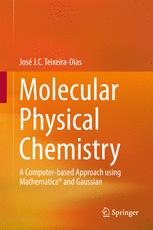

Most ebook files are in PDF format, so you can easily read them using various software such as Foxit Reader or directly on the Google Chrome browser.
Some ebook files are released by publishers in other formats such as .awz, .mobi, .epub, .fb2, etc. You may need to install specific software to read these formats on mobile/PC, such as Calibre.
Please read the tutorial at this link: https://ebookbell.com/faq
We offer FREE conversion to the popular formats you request; however, this may take some time. Therefore, right after payment, please email us, and we will try to provide the service as quickly as possible.
For some exceptional file formats or broken links (if any), please refrain from opening any disputes. Instead, email us first, and we will try to assist within a maximum of 6 hours.
EbookBell Team

5.0
28 reviewsThis is the physical chemistry textbook for students with an affinity for computers! It offers basic and advanced knowledge for students in the second year of chemistry masters studies and beyond. In seven chapters, the book presents thermodynamics, chemical kinetics, quantum mechanics and molecular structure (including an introduction to quantum chemical calculations), molecular symmetry and crystals. The application of physical-chemical knowledge and problem solving is demonstrated in a chapter on water, treating both the water molecule as well as water in condensed phases.
Instead of a traditional textbook top-down approach, this book presents the subjects on the basis of examples, exploring and running computer programs (Mathematica®), discussing the results of molecular orbital calculations (performed using Gaussian) on small molecules and turning to suitable reference works to obtain thermodynamic data. Selected Mathematica® codes are explained at the end of each chapter and cross-referenced with the text, enabling students to plot functions, solve equations, fit data, normalize probability functions, manipulate matrices and test physical models. In addition, the book presents clear and step-by-step explanations and provides detailed and complete answers to all exercises. In this way, it creates an active learning environment that can prepare students for pursuing their own research projects further down the road.
Students who are not yet familiar with Mathematica® or Gaussian will find a valuable introduction to computer-based problem solving in the molecular sciences. Other computer applications can alternatively be used. For every chapter learning goals are clearly listed in the beginning, so that readers can easily spot the highlights, and a glossary in the end of the chapter offers a quick look-up of important terms.